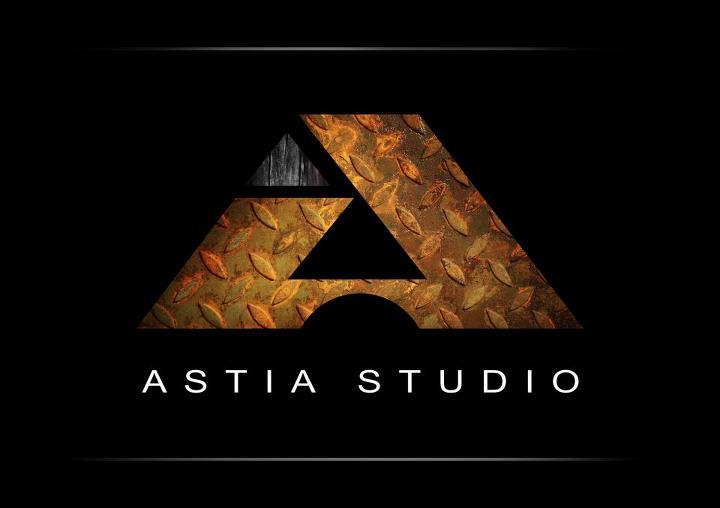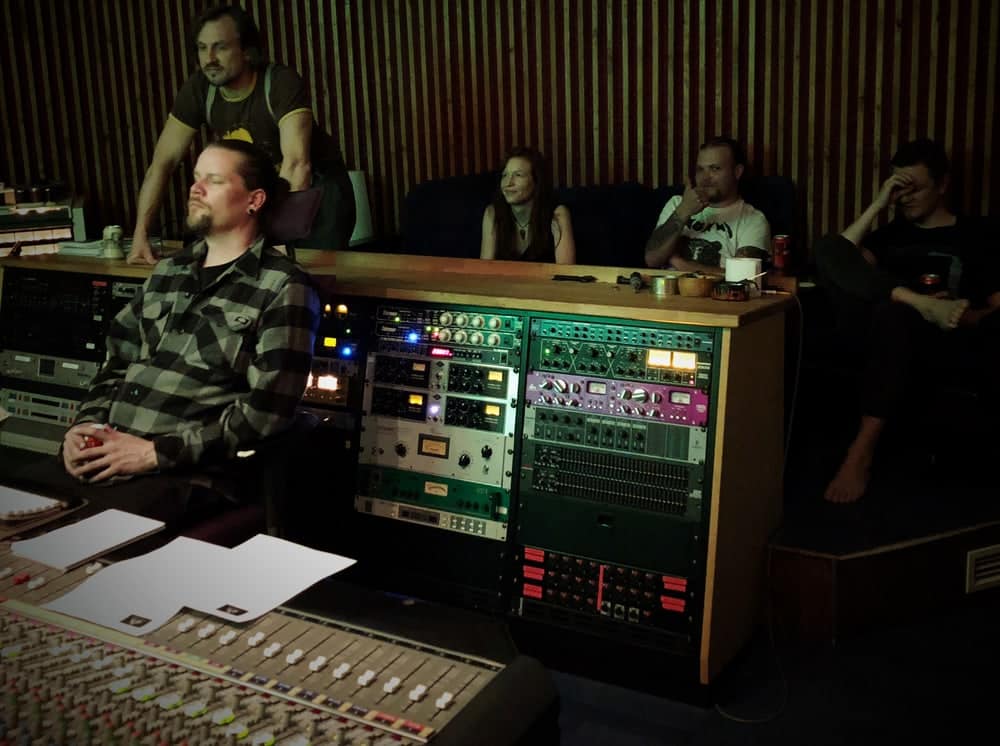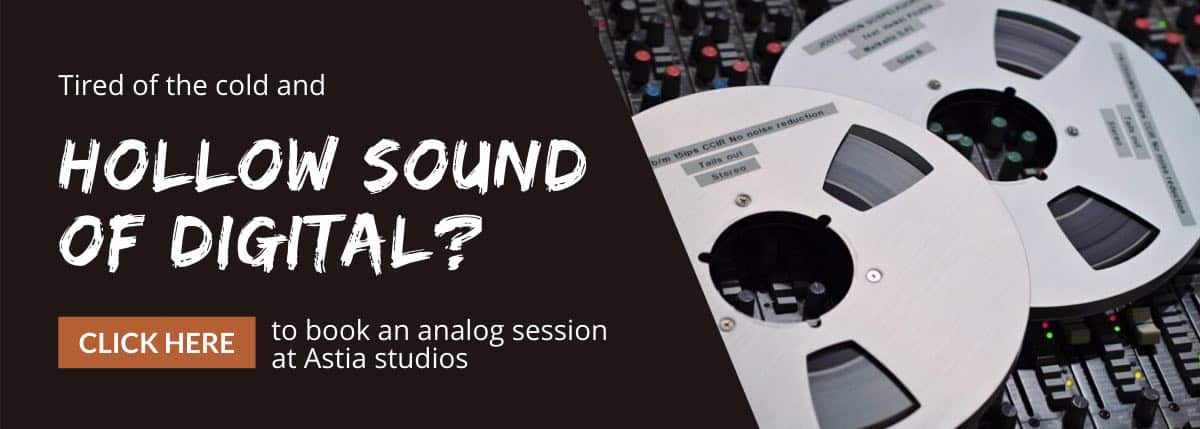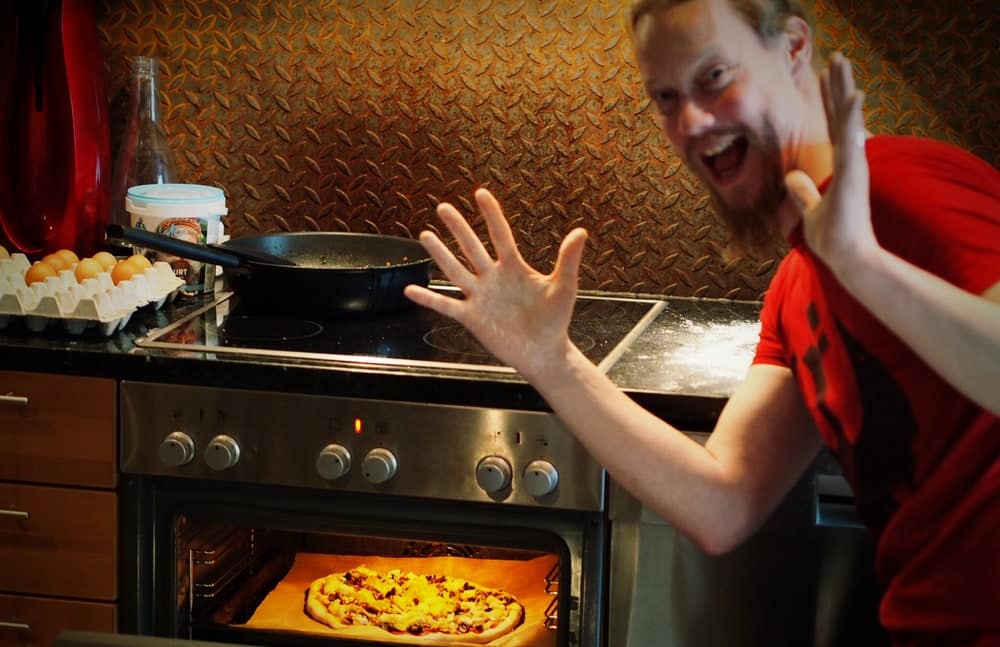Better vocal recording pt. 2
We continue where we left off on part one. The vocalists who we recently worked with share their thoughts about vocal sound, recording, how they feel tape recording differs from computer recording and few cool vocal-related tips and tricks. One of our all time favorite trick is how to help the vocalist to hit the high notes correctly. Let’s see if you can spot the tip. Please enjoy the full comments from Hella, Jari, Juho, Jukka, Mariina, Noora and Petri about better vocal recording.
Read our other post about the topic:
Hella / Jellyfish Inn
What is important in vocal recording and what makes it sound good?
This has been said many times, yet never enough: vocalist’s instrument is the body, so your health is the first thing to take care of. Rehearsals are super important too as they give you the power of confidence for your part of the music. Melody and lyrics become your friends and your tool to express yourself, not only the challenge you need to complete. Self-confidence, in a good way of course, helps and it also comes from teamwork and being together with your bandmates. To sum up: health, rehearsals, teamwork, reasonable self-confidence and good emotions (differs from persons to person).What were the factors that made vocal recording in Astia-studio feel better or worse compared to other situations?
Honestly, it’s hard to say because beyond Astia we have only recorded demos in crazy circumstances.What have you learnt from the Astia-studio sessions?
Both Astia-studio sessions taught me many professional things and one blog is too small to list them all. I would like to highlight the fact I learned from comparing computer and tape approaches in recording – sometimes old ways are the best ways.How would you describe the difference between computer and tape recording especially with vocals and vocal sound? Do both recording formats deliver similar results and if they differ, how would you describe it?
I am more satisfied with recording vocals on tape, because it sounds closer to what I am in real life. And I think it was achieved by three factors. First, the tape recording means recording longer parts and not cutting and copying a couple of words like it’s done in computer recording. Second is the team bond i.e. the basic tracks were recorded with the whole band playing together, and this unity was there during guitar and vocal recording too. And third, the inexplicable warm magic of tape.If you have experience recording vocals in different studios, how would you describe the Astia-studio vocal booth and its atmosphere?
Astia-studio vocal booth is pure hygge! You can even close the jalousie there. The perfect atmosphere to relax, feel good and to be yourself.What is your approach to recording vocals live with the whole band?
The approach of Astia-studio differs from others. I mean, the studio project, construction and work process are all done by one person and it makes the recording process solid. I think singing live helped a lot during recording. With this approach even if a band member is not listening to vocals intentionally, it still influences his playing. As we recorded rhythm section together with demo vocals, my singing influenced the way the band played. And later during vocal recording it felt like there was no need for me to adjust to their playing. It was just like we were playing live.Would you like to comment on something else or do you have any other things about vocal sound and vocal recording you would like to mention?
During our latest session in Astia-studio we succeeded in capturing our personal feelings and energy of our songs on tape, including the emotion of my voice. With this album we can distribute the real us to the world, which is invaluable. I would like to thank Astia-studio and Anssi Kippo for giving me the opportunity to be myself.
Noora Korppi / Faulty Messenger
What is important in vocal recording and what makes it sound good?
The most important thing when singing and in life in general is to do everything with emotion. When the text flows from the depths of your heart it usually make both the tuning and sound automagically exactly right.What were the factors that made vocal recording in Astia-studio feel better or worse compared to other situations?
Compared to other sessions it was the bestest to record all together at the same time even though I was in an isolated booth. This brought recording to a whole new level compared to recording with previously recorded instruments.I also liked the fact that for once I was allowed to sing from beginning to end instead of recording a verse (or a line) at time. I believe this was the key to the correct emotion.
There was the pressure of very limited correction capabilities; no autotune or any editing. I recommend all vocalists to record a demo before entering studio to hear what parts need most attention and rehearsing.
What have you learnt from the Astia-studio sessions?
You cannot overemphasize rehearsing together with the band also alone to hear every detail properly. I guess I’m not the only one who is shocked – in a positive sense, to hear oneself properly for once. It’s a good idea to get familiar with the headphone sound and balance on the previous evening before the session in studio to get used to the recording situation.Recording harmony parts was one of the coolest recording experiences ever. I had no backing vocals figured out when entering Astia-studio as I had heard rumours about Anssi’s phenomenal ability to create cool harmony parts on the fly. And that’s exactly what happened. First we arranged the harmony lines and made proper rehearsal before even considering to enter the vocal booth. This minimised all additional tryouts and hassle.
It naturally took its time to get familiar with the new harmony line and to have it in the muscle memory. Repeat after another helped to get rid off thinking and to get into the emotion department. It was cool to learn how great it was to sing the harmony part always from beginning to end even if I made a mistake in the beginning my inner critic would have pressed stop and start from the beginning. Mr recording engineer never said anything negative and patiently requested to sing the part again. Every take took me one step closer to the Correct Emotion. The result exceeded all my expectations and those listening seemed to have something in their eyes too.
How would you describe the difference between computer and tape recording especially with vocals and vocal sound? Do both recording formats deliver similar results and if they differ, how would you describe it?
The biggest difference with computer and tape recording is that with tape the vocalist sounds more human in all fragility, energy and presence. That’s simply priceless.
If you have experience recording vocals in different studios, how would you describe the Astia-studio vocal booth and its atmosphere?
Astia-studio is all in all an emotional facility built with passion. A hippie like me felt very comfortable among the natural materials and wax-dyed fabrics.As a recording engineer Anssi is both easy-going and demanding. And endlessly positive! As singing is pretty sensitive and personal thing, it was almost a therapeutic experience to record vocals with the tender guidance of master Kippo.
What is your approach to recording vocals live with the whole band?
After rehearsing a lot together with the whole band it felt natural to also record all together. I don’t feel good about the fact that during the first two songs I wasn’t as warmed up as my band members. Next time I’ll need to have more time to do proper warmups before recording.–Noora Korppi / Faulty Messenger
Juho Koski / Spell Of Torment
What is important in vocal recording and what makes it sound good?
Vocals need to have anger and fury. You must dare to step into the text and to mean everything you say. Also the emotion is an important factor. Don’t sing using throat only and use the correct technique!What were the factors that made vocal recording in Astia-studio feel better or worse compared to other situations?
Our first two releases were recorded pretty fast and there wasn’t enough time to put enough attention to vocals and lyrics. Especially in black/death metal if you have too many words and not enough breaks to catch breath it makes performing the songs a challenge. On the third session when recording our debut album things were a lot easier. We fixed all lyrics, made correct rhythmics and made everything sound great on live performances too.What have you learnt from the Astia-studio sessions?
It is recommended to prepare properly for the session to make working with the producer a smoother ride. Sure you need to be humble when disappointment comes and that if anything will make you stronger. I’ve learnt a lot during the past three years about music, sound and their importance. Astia-studio has opened many doors for me in all things related to music. I nowadays buy vinyls and am more interested in cassettes than cds.How would you describe the difference between computer and tape recording especially with vocals and vocal sound? Do both recording formats deliver similar results and if they differ, how would you describe it?
When we recorded on computer, vocals sounded dead in a bad way. Digital seems to lose all energy and then again from tape recording the energy is delivered on a whole new level. Vocals seem to be alive along with a mystic side to them. When listening to vinyls the difference between computer and tape recording is very clear.Anssi’s Spotify comparison says pretty much it all.
If you have experience recording vocals in different studios, how would you describe the Astia-studio vocal booth and its atmosphere?
Astia-studio vocal booth is very pleasant for the musician. Everything you need is there; the wedge, headphones and a table with candles for atmosphere. The tube mic is made to capture all that you’ve god. The equipment is top notch and Anssi takes care of when you can exit the vocal booth.What is your approach to recording vocals live with the whole band?
I’ve done three sessions together with the vocalist and next time we’ll take the whole band to studio to record live all together relaxed and with good groove. This will increase the energy of the performance. Definitely worth testing.Would you like to comment on something else or do you have any other things about vocal sound and vocal recording you would like to mention?
Astia-studio taught me an important thing: implementation. Prepare proprely. The lyrics made at home may not be the final version that will end up on the album.When entering the studio take these things into account:
1. Write a song and structure map.
2. Plan the arrangement. Know what to play and prepare the lyrics.
3. Figure the vocal rhythm and rehearse it by “rapping along” even though it may at first feel a bit weird.
4. Lear the correct vocal technique and don’t sing using only the throat. If your neighbours don’t appreciete your growling drive to an isolate place where you can rehearse without interruption.As for the final words, Astia-studio and the crystal clear sound. I warmly recommend to professionals and beginners. With organic sound to most amazing productions are done by the one and only of the best; Astia-studio!
Petri Lindroos / Ensiferum
Once the vocal sound is adjusted to suit the vocalist and there’s time to record different approaches, it makes Petri the opposite of a dull boy. What makes a great vocal sound? Or rather who! Well, Kippo of course.
During the years I’ve visited Astia-studio several times and there has always been a relaxed and pleasant atmosphere. As they now have made the transition to tape recording only, I remember many computer hassles at Astia and also in other studios. Nowdays that is all gone as there is no computer that could crash. And recording on tape wasn’t as difficult as I had feared.
Patience is a virtue and there are so many ways to play the guitar. New things have emerged on every session that is great. When recording on tape the sound is as natural as possible. On our previous session we compared tape and computer recording. Sound lost the beefiness and seemed to become a lot more flat. It’s difficult to put down in words, but tape seems to capture more.
Astia vocal booth has always been atmospheric with dim lights and ever-so-important wedge that takes you on stage. I use it without any exception. The Neumann mic has good, warm and clear sound. I guess we never tried any other mic as there was no need for that.
I’ve never recorded vocals in studio live with the band as it might not necessarily fit Ensiferum style, but why not try that too in future.
I recommend tape recording to everyone regardless of the music style. There is a difference in sound. I recommend checking this out.
Mariina Niittymäki
What is important in vocal recording and what makes it sound good?
In vocal recording – as with everything else – the most important thing is that the vocalist feels good, relaxed, safe and comfortable. Your tool is your body and it is very sensitive to any distractions. Sometimes just the presence of an outsider when recording can create tensions – for reasons unkown to me – and affect the result. Along with the already mentioned a great vocals sound comes from the correct and professional microphone and when the vocalist has planned all phrasing.What were the factors that made vocal recording in Astia-studio feel better or worse compared to other situations?
Astia has the best facilities. Anssi has a way to make the musicians feel at ease and the level of his professionalism and equipment will remove all worries from everyone. When needed Anssi will provide good tips and suggestions that will fit your style over the genre limits and is always on the same side with you. His relaxed style is to guide you towards the so-called flow-state-of-mind. I cannot think what could be better.What have you learnt from the Astia-studio sessions?
The asset of analog sound ❤️ And one basic thing that can easily slip out of the to-do list: make a demo before entering studio. A rehearsal demo should have the arrangement as close to the final version as possible.How would you describe the difference between computer and tape recording especially with vocals and vocal sound? Do both recording formats deliver similar results and if they differ, how would you describe it?
Analog seems to deliver the nuances and emotion better. Sound is a lot more warm and somehow it seems like the analog sound would be much more gentle to the vocalist.
If you have experience recording vocals in different studios, how would you describe the Astia-studio vocal booth and its atmosphere?
The vocal booth is awesome as you can see both the live room and control room. It also has a very cozy interior design. There’s even a humidifier that comes in handy especially when you have to sing several songs straight. Neumann U67 on vocals – now that’s just the top of the line.What is your approach to recording vocals live with the whole band?
At first I was sure that it won’t happen. Once the first version was recorded, I was pleasantly surprised: the live recording was left to the final version.Would you like to comment on something else or do you have any other things about vocal sound and vocal recording you would like to mention?
I sincerely recommend Astia-studio to everyone!
Jukka Pesu / The Rivet
What is important in vocal recording and what makes it sound good?
When recording vocals it is essential that the vocalist gets into the correct state of mind. At first I had a huge monkey on my back to do things technically correct. I now have noticed that the technical success and emotion go hand in hand. If you concentrate too much on the technical side, most likely the result won’t be as good as when concentrating on the emotional side.Keep your sound as natural as possible to emphasize your persona. This is unique stuff that you should cherish.
What were the factors that made vocal recording in Astia-studio feel better or worse compared to other situations?
At Astia there was a lot more focus on the emotion. The mood of the vocal booth, headphone balance etc. were thoroughly checked and then we started rocking. With other studios I’ve noticed that the first comments are about hitting the right note. That’s a great way to kill all emotion. When you are about to get into the zone and all of a sudden you need to start concentrating on one syllable and its pitch. This naturally is not something to dismiss, but the way to get there is what makes the difference. The correct emotion will make the notes and pitch right too!What have you learnt from the Astia-studio sessions?
I learnt that if you imagine singing loud, aggressive, soft etc. the way you think is 100%, yet in the vocal booth you need to do more. If you want to sound like Corey Tayler from Stone Sour at his most aggressive, you need to go over the top from what you think is enough. It feels like when you rage to the microphone like hound that has rabies you are much closer to what is needed compared to if you “leave a little for reserve”. Singing is a hard physical work where you have to use your whole body.
How would you describe the difference between computer and tape recording especially with vocals and vocal sound? Do both recording formats deliver similar results and if they differ, how would you describe it?
Tape seems to capture more. Computer seems to lose the brightest edge from the emotion. It’s clear when I’m recording demos and listening the tracks.If you have experience recording vocals in different studios, how would you describe the Astia-studio vocal booth and its atmosphere?
Feel the eyes watching your back, standing straight like a choirboy just doesn’t feel right, fluorescent lamp and egg cartons on the wall isn’t exactly a sight for sore eyes along with headphone balance that’s not right.The solution: close the curtains, put your leg on the wedge, candles and a cool eastern rug bring more emotion and to adjust the headphone balance yourself…. so far possible only at Astia-studio!
Would you like to comment on something else or do you have any other things about vocal sound and vocal recording you would like to mention?
In music made today it seems that the sound of the vocalist is lost along with all the small mistakes. That’s what autotune is for and I think it should be banned. I’ve been watching Idols on tv and it’s not something to cheer for. I think most teenagers do not understand that the songs they try to sing are heavily autotuned. Natural seems to be going extinct in this plastic world we live in…
Jari Väyliö / Oliver
What is important in vocal recording and what makes it sound good?
Singing especially when recording are strongly spiritual situations. Many factors need to be just right to capture the right stuff. Circumstances and adaptation mean a lot to me. In addition the vocal condition affects a lot. If your body it technically good and voice flows it helps to deal with the pressure of “now or never you should sing pretty damn good”.And then the producer and recording engineer have an important role creating the right atmosphere and to boost your selfconfidence for the session. In short I’d say a great vocal sound comes from three factors: correct preparation, body and mind in good condition and the understanding of the producer/engineer towards the sweating stresser in the vocal booth.
What were the factors that made vocal recording in Astia-studio feel better or worse compared to other situations?
Astia-studio has always had a damn good sound in headphones. That has a huge effect on the vocal performance. Anssi’s way of working has a huge affect as the sound is already very close to the final mix, which makes it great to sing with such balance and sound. We’ve only done one session on tape and it was a bit stressful as the vocal recording has limitations. I do understand that it is one way of making productions and it’s kind of a tool to arrange and create content.What have you learnt from the Astia-studio sessions?
Well, especially that you can do more than you have imagined in most peculiar of situations if you have enough repeats and the mental capacity. Anssi has a way to record many takes and for a bedside-dreamer-popstar it has been especially during guitar recording a big learning experience. Oh, and one interesting tip on how to sing high parts from January 2015: placing hands on top of your head makes it possible to hit those high notes that you normally wouldn’t hit.How would you describe the difference between computer and tape recording especially with vocals and vocal sound? Do both recording formats deliver similar results and if they differ, how would you describe it?
The biggest difference is that you cannot listen several different takes to compare and choose from. Both methods have their ways. The overall feel can be more solid when recording whole takes, but then again some really cool detail might not be there as you are not willing to take a chance. I don’t think they can be compared like which is better. They both have good things and it depends on the production which way would be more suitable.If you have experience recording vocals in different studios, how would you describe the Astia-studio vocal booth and its atmosphere?
The vocal booth of Astia-studio is quite ok. I’m a bit more on the larger scale when it comes to size so bigger space is a good thing. I cannot put my leg up on the wedge, but other than that the space has been pretty much occupied. The warmth and prescense of the Neumann U67 mic is simply awesome. And as the headphone balance is right, the singing is pretty smooth. I believe headphone balance is a huge factor in emotion that singing delivers.Would you like to comment on something else or do you have any other things about vocal sound and vocal recording you would like to mention?
Well then, things at home are pretty ok and athletics seems to interest.
End of part two
Thank you for your interest about better vocal recording, vocal sound and the comments from the vocalists who recently recorded at Astia-studio.
If this post was helpful, please share it on social media. This way you will help your friends to benefit from the information.
I cannot wait to reply your questions and comments so please do leave them below. Reserve a full analog tape recording session with me by clicking here. Thank you very much and all the very best!
Astia-studio is a full analog recording studio located in eastern Finland with 25 years of experience working with bands and artists from all over the world.










